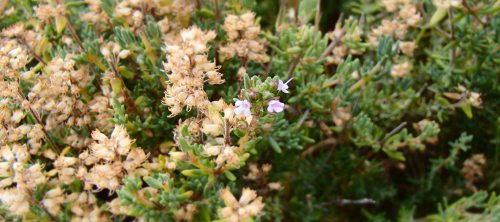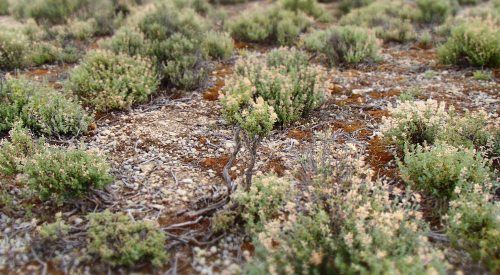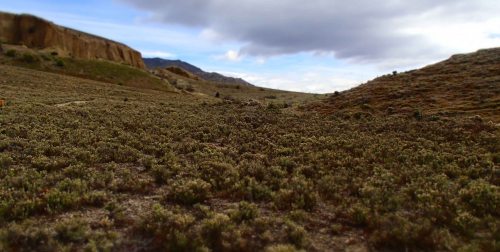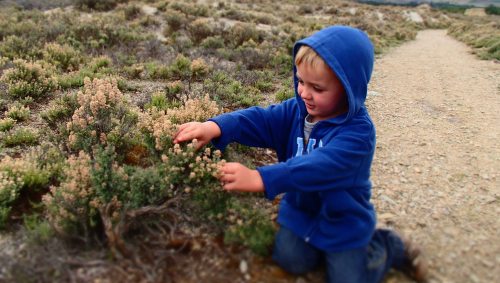I have long struggled to grow thyme (Thymus vulgaris) in my herb garden, but now I know the answer. The trick is to start in some tough dry mountains that swing from baking heat to bitter cold, erode your land with huge scale sluice mining right down to lifeless rock scree, infest it chronically with rabbits and leave it be for a century. This is the setting for some stunning expanses of introduced wild thyme in New Zealand’s Central Otago.

The last remnants of thyme flowers in February, the nectar flow over and one of the world’s under-appreciated great monofloral honeys extracted and jarred for another year
I also now know how beekeepers here can honestly claim to be producing reliably monofloral thyme honeys – wonderfully rich with strong, mineral and herby bitter flavours. It is the recently visited Bannockburn Sluicings I have most in mind; a historic site preserving the remains of 19th Century hydraulic sluice mining for gold, where water was used to intentionally erode an entire mountainside away. Here the thyme is practically a monoculture and is similarly prolific in other areas across much of Central Otago where little else will grow or survive the rabbits as well.

Gnarled thyme stems scattered across bare ground look like a bonsai artist’s triumphant recreation of a desert scrubland

It is hard to appreciate the scale of the land disturbance where the tops of the cliffs are the former 19th Century land surface with everything below taken away in search of gold
It is a peculiar landscape of peculiar scale. You may look at the big view and struggle to imagine the former landscape where clifftops mark an original level over crinkled badlands surfaces that were tens of metres underground only 150 years ago, reminiscent of the mesas and buttes of an American western. Then at the macro scale, the gnarled tough trunks of these hardy survivors look most of all to me like a miniaturised southern Australian desert scrubland – mulga (Acacia aneura) shrunken to a 1:100 scale.
So I tip prune off a modest crop, reminded by the pea sized mulch of droppings left across the land that I might get out hunting and be up for a rabbit stew. A taste test on a batch of breakfast hashed potatoes is delicious, strong and earthy; resisting the temptation to overuse some of the abundance of it proves wise, with just a small pinch giving a wonderful lift. It then sprinkles on some roasting pumpkin destined for soup and similarly gives a subtle herby lift. I leave stunned by how I have managed to hitherto not realise how good this wild herb is; and by how ridiculously abundant it is.


